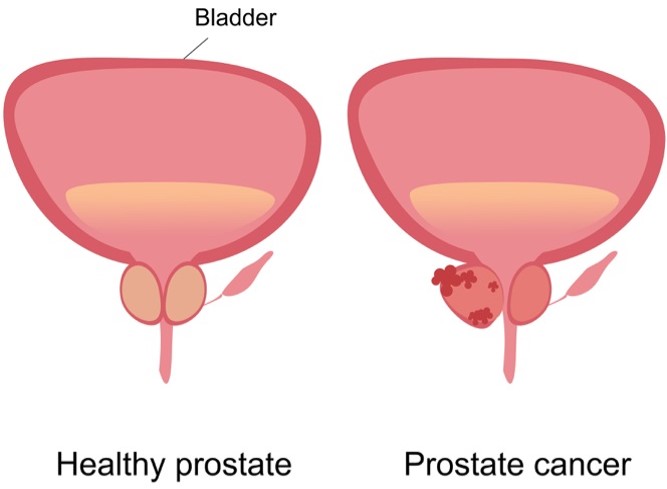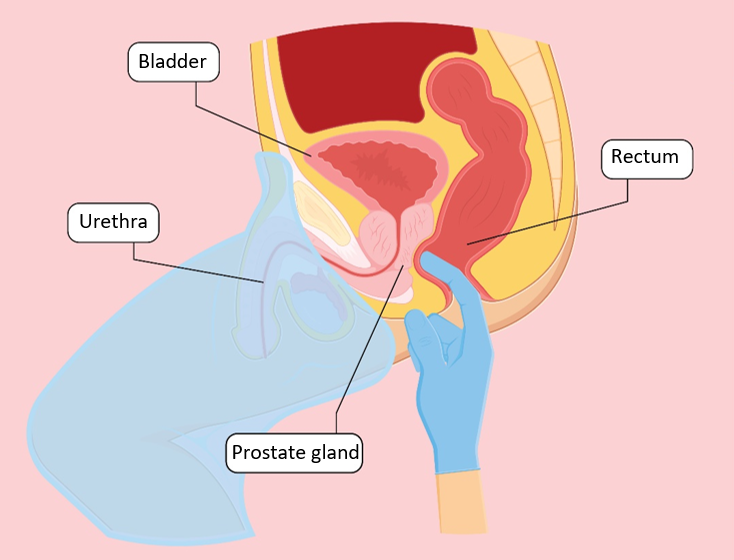What is Prostate Cancer?
The cells that make up the outermost part of the prostate can become cancerous and give rise to prostate cancer. If left untreated, prostate cancer cells may eventually spread and invade other parts of the body, particularly the lymph nodes and bones, producing secondary tumours.

Risk Factors
- Age: The risk of prostate cancer increases after the age of 50 years
- Hereditary: Family history increases the risk of prostate cancer
- Diet: The risk of prostate cancer may increase with a high-fat diet or obesity
Symptoms
Early stage prostate cancer may not produce any signs. As the cancer advances to a later stage, it may produce the following symptoms:
Diagnosis
Screening tests can help to detect prostate cancer early. Some of the screening tests available include:
1. Digital Rectal Examination: This is the first step in diagnosing prostate cancer. The doctor uses a gloved finger to examine the rectum and detect any abnormalities in the texture, shape or size of the prostate gland.

A doctor uses a gloved finger to examine the rectum.
2. Prostate-Specific Antigen (PSA) Blood Test: PSA is a substance produced by prostate cells. High PSA levels will warrant further investigation.
3. Transrectal Ultrasound: An ultrasound probe is inserted into the rectum to check the prostate. This may or may not be fused with Magnetic Resonance Imaging (MRI) for targeting.
4. Biopsy: This procedure involves taking thin sections of tissue from the prostate gland. A positive result for cancer cells may be followed by additional tests to ascertain the stage of cancer. Additional tests include:
Treatment
Surgery: May be recommended if the tumour is localised at the prostate. It involves the complete removal of the prostate.
Radiation Therapy: Radiation therapy uses high-energy beams to kill the cancer cells.
Hormonal Therapy: Hormone therapy for prostate cancer is a treatment that stops the male hormone testosterone from being produced or reaching prostate cancer cells. Most prostate cancer cells rely on testosterone to help them grow. Hormone therapy causes prostate cancer cells to die or to grow more slowly
Chemotherapy: Chemotherapy is a cancer treatment that uses drugs to stop the growth of cancer cells.
Active Surveillance or Watchful Waiting: •Selected persons may be closely monitored by blood tests and biopsies.
Prevention
There is no total prevention for prostate cancer. In general, men are advised to make choices that benefit their overall health such as:

Men over 50 years of age and/or men who have a strong family history of prostate cancer should be aware of the symptoms of prostate cancer, and discuss the risks and benefits of prostate cancer screening with their doctors.
Getting Support
For more information, please contact our Clinical Coordinator, Department of Urology, at +65 9726 1802.
